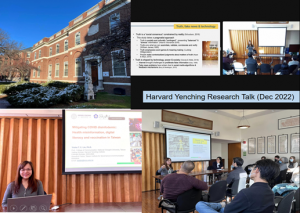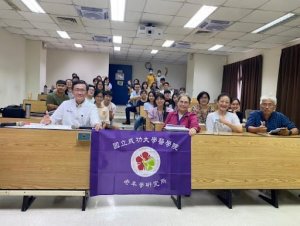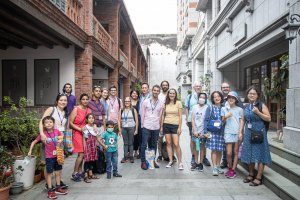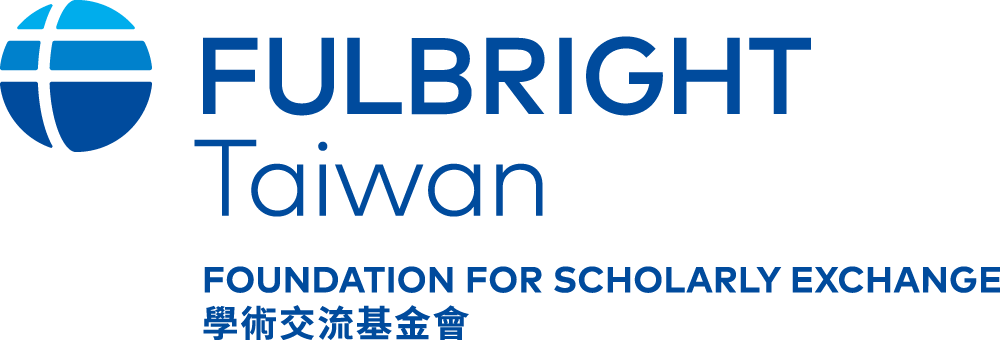I am grateful for the funding and support that the Fulbright Program offers me. Also, writing this reflective essay provides me a great opportunity to think and document what I have experienced in the past year. My journey in the United States so far, especially in the state of Illinois, can be divided into three categories: 1) study, 2) research, and 3) life.
Study
I am studying my doctoral degree in Community Health at the University of Illinois at Urbana-Champaign. In the first semester at U of I, I was amazed by the flexibility that students in my program could have in the selection of courses. When I was studying in Taiwan, I did not really have to think what classes to take as most of the courses were mandatory. Thus, my first task as a PhD student was to explore and plan my coursework that best suits my research field. I ended up registering for three courses and one independent study with my academic advisor. The first two courses I chose both involved quantitative methodologies, specifically econometrics, offered by the Department of Agriculture and Consumer Economics. On the one hand, I was curious about how people in the field other than health sciences would use statistics. On the other hand, however, I was also interested in knowing if the content would be relevant to me. To my surprise, I learned that many students who registered for these two courses were actually coming from different departments. Moreover, these courses turned out to be very interesting and informative. Generally, I had a very good time learning methodologies from these classes.
Another highlight of my first semester was the third course that I took. It was about developing health technologies in the context of aging populations. Similar to my two other classes, students who attended this one also had diverse backgrounds. However, the third course had only four enrolled students. Thanks to the small class size, the students and the professor had fostered a very strong and positive learning environment—I felt safe asking questions during the class. In terms of grading, I noticed that students in the United States are typically evaluated based on their participation in class and their contribution to group projects. Take this course as an example. There was a team project that we needed to design a hypothetical technology to help older adults maintain a healthy eating lifestyle (we didn’t really need to produce a real product though). Our group had spent a long time on brainstorming how to promote this health behavior effectively and creatively. It was interesting that the technology we finally came up with was based on the idea of social participation. More specifically, it is healthy eating via social participation. Isn’t it amazing? At the end of the semester, we even presented our work to some older adults who lived in the local community. We were grateful for the feedback and comments they provided us. Overall, I learned not only the new knowledge but also how to collaborate with other students in this wonderful class.
Research
I am fortunate to have plenty of opportunities to be involved in my academic advisor’s lab projects. Our lab, Adult Development, Adaptation, and Technology Lab (AdaptLab), has a series of collaborative projects focusing on the risk of falling among older adults. Falls are known to have deleterious impacts on older adults’ physical health and psychological well-being. As aging is a complex and dynamic process, we further regard fall risk as a “trait” that would vary not only within but also between individuals over time. Factors that would account for the inter-individual differences are also of our great research interests. Moreover, our lab is interested in investigating the role that health technology could play in the context of fall prevention strategy.
During my first semester, I worked closely with the research team to recruit participants. The participants we recruited were primarily coming from the Champaign-Urbana area. I was quite surprised to learn that many people here in this university community are so willing to take part in and contribute to research. Although my observation could be partly biased, I was still impressed with American people’s enthusiasm and interests in being a part of scientific research. One thing also worth sharing is that in Spring 2020, we transferred all of the works online in response to the COVID-19 pandemic. We spent a great amount of effort making the research protocols doable in a non-traditional fashion. While it was not an easy task, I was proud that we ended up being able to continue our research remotely.
In addition to the collaborative lab projects, my advisor also carved out a space for me to explore my own research interests. Having been a physical therapist interested in aging and health promotion, I was aspired to examine why some older adults are healthier and more active than others. By gaining further understanding of this group of “healthy older adults,” I can apply what we have learned from them to other vulnerable older populations. As I mentioned earlier, I concentrated a lot on quantitative methodologies during my first year of study. I was glad that many techniques taught in class can actually be employed to answer the research questions that I proposed. I was also delighted that one of my works has been accepted for a poster presentation in the Gerontological Society of America’s 2020 annual conference. All in all, health and aging are exciting research topics, and I am eager to learn more.
Life
While I have dedicated most of my time to study and research, I still save time to get to know more about American culture. One of the most unforgettable memories is that my wife Jessica and I were invited to celebrate Thanksgiving and have dinner with my advisor’s family last year. All of them were hospitable and the atmosphere was so nice. My advisor’s husband showed us a lot about how American people would celebrate this national holiday (e.g., what dishes to make). That was my first Thanksgiving in America, and I had a wonderful night because of these great people. During the winter break, my wife and I happened to have time to travel to Los Angeles to visit our relatives. It is hard to describe how thrilled we were to meet our aunt, uncle, and cousins there. In addition to the family reunion, we also visited several renowned tourist attractions in California. For instance, we visited the Walt Disney Concert Hall, the Golden Gate Bridge, as well as Yosemite National Park. We also had the chance to visit the University of California, Berkeley. Despite the fact that we were traveling within America, we still noticed that there are many differences between the states. All in all, I was thankful for being able to have this short but refreshing trip between semesters.
There are many other goals that I need to realize while I pursue my PhD degree. Building mutual understanding between people in the United States and Taiwan, for example, is a one of the crucial aims in the Fulbright program. There are multiple ways to embody this vision. For me, I believe that the best way to do so is to treat people sincerely and honestly. To be honest, I did not deliberately emphasize the country where I am from. Nor did I mention Taiwanese culture very often. However, I keep asking myself to be honest, dedicated, and responsible whenever I am working with others. I notice that once people feel comfortable getting along or working with me, they would then become interested to know more about me as well as my culture. This is not always applicable to every person I met, but I deeply believe that mutual understanding and cultural exchange will not truly take place until people actually feel comfortable and ready to do so. This is an ongoing journey. I will continue to play my role as a Fulbrighter and realize the mission of the program.
Having studied in the United States for a year, I am gradually getting used to the life here. Potato, bean, and corn have become my new “friends” (remember that I am studying in the state of Illinois!). Walking on icy roads while maintaining balance was part of my routine during wintertime. Additionally, talking to customer services in English over the phone is a kind of “exam” that I have to take frequently. These are things in which I have little or no experience when I was back home. This process of adaptation has reminded me to be flexible and open to change. Altogether, for better or worse, I really enjoy my life here in America, but at the same time I do miss Taiwan a lot. I wanted to thank my wife for all of the support, care, and love she gives me. I also wanted to thank my parents for always being with me.
Studying in the United States is indeed challenging, especially during this unprecedented time. Nevertheless, I will stick to my goal and keep moving forward with all the support from my loved ones and Fulbright.
Managing editor: Li-Hsin Ning 甯俐馨






